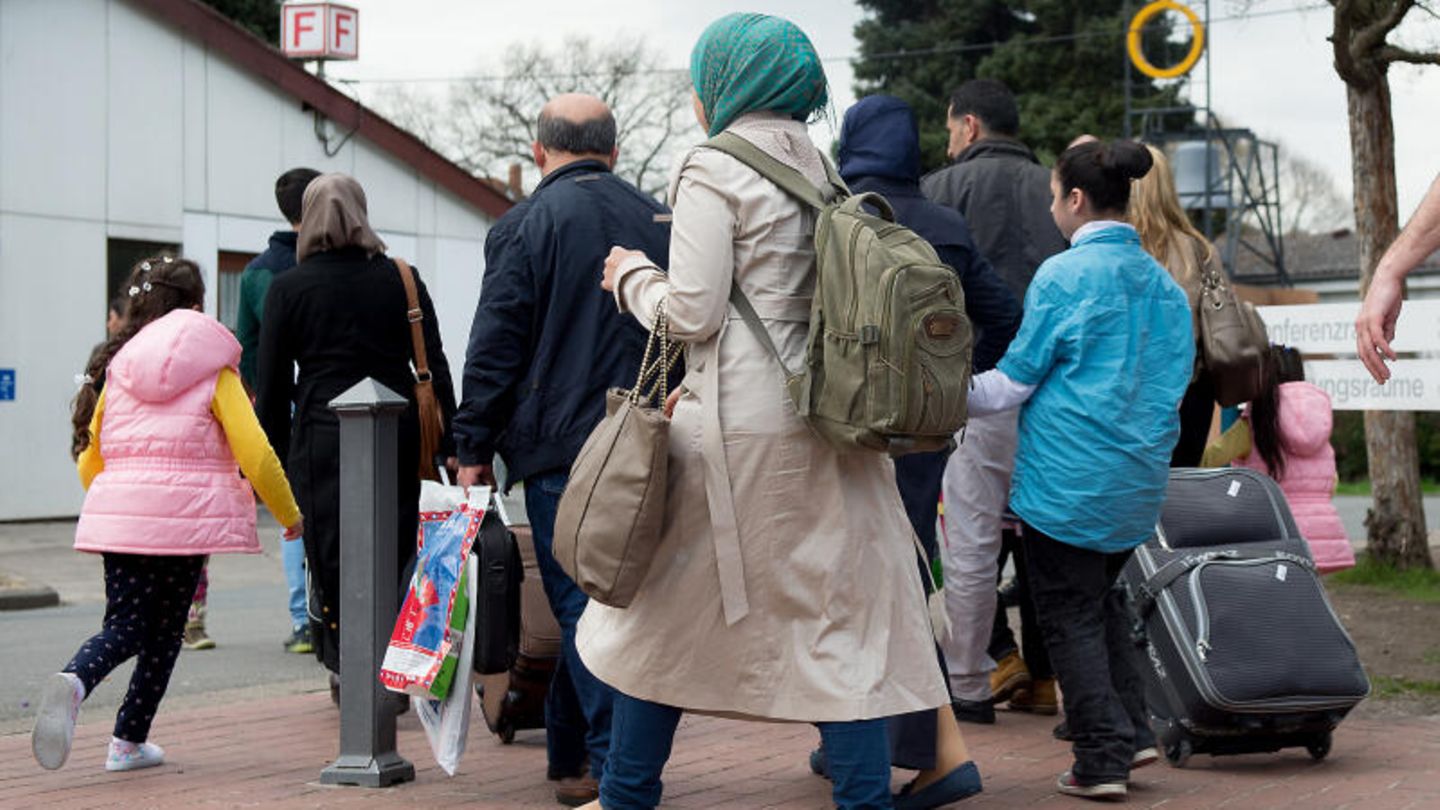CSU leader Markus Söder is calling for an upper limit for refugees, while former Federal President Gauck speaks of “limitation strategies”. According to many politicians, Germany is already in a “migration crisis”. But is that really true?
More than a million people from Ukraine, plus hundreds of thousands from Syria, Afghanistan, Turkey and Venezuela: After the high numbers of people seeking protection in 2015, some political actors say Germany is once again in a massive “migration crisis”. It’s not just conservative politicians who are pushing to reduce the number of people seeking protection. Even former Federal President Joachim Gauck explained in a recent interview that “perhaps it is not morally reprehensible at all and is even politically necessary to pursue a limitation strategy.”
Is the Federal Republic at its limit? Are we threatened with converted hardware stores and sports halls that have to serve as initial reception facilities again, like eight years ago? Or is the discussion about asylum seekers just part of the election campaign with a view to the state elections in Bavaria this year and in the eastern German states next year?
A look at the numbers
In 2022, a total of 962,160 asylum applications were submitted in the European Union, 243,835 and therefore almost 25 percent of them in Germany. The Federal Republic has therefore accepted the highest number of people seeking protection in Europe. France came in second place (156,455 applications / 16 percent) and Spain came third (117,945 applications / 12 percent).
Compared to 2021 (632,405), the number of asylum applications in the EU increased by 52 percent. War refugees from Ukraine are not included in these statistics: an estimated 4.8 million Ukrainians have entered the European Union since February 2022. There are currently 1,086,357 Ukrainians living in Germany (as of September 3, 2023). Most of them came in the first months after the Russian invasion. But why does the migration system in Germany now seem to be “suddenly” at a standstill after almost a year and a half?
As the “Mediendienst Migration”, a project of the “Rat für Migration eV”, an association of migration researchers, explains, this is because most Ukrainians did not fall directly into the reception system in the first phase. Since June 1, 2022, Ukrainian citizens have been entitled to benefits under the Social Code – just like recognized refugees. This means they are entitled to payment of citizen’s benefit or social assistance, are allowed to work in Germany, receive a health insurance card and are entitled to an apartment. And the latter in particular is now putting a strain on the recording system.
Refugees from Ukraine: What has changed
The problem is becoming increasingly clear today, a year and a half after the attack on Ukraine. In the initial phase, most war refugees were able to stay with family, friends or in privately rented apartments. In most cases, they also applied for their temporary protection title there and were therefore registered in the respective city. When they moved out of their first accommodation for private or financial reasons, they fell directly into the municipal reception system.
Unlike other people seeking protection, who are distributed among the federal states immediately after their arrival in Germany, Ukrainian citizens have to be accommodated in the city of their own choosing. This problem becomes particularly clear when looking at the housing shortage in many cities and municipalities. The Ukrainians who were initially accommodated privately and are now asserting their right to housing are becoming an additional “burden” on the reception system because they cannot be relocated to other cities where there is still capacity. This has resulted in local “occupancy bottlenecks” in recent months. Ukrainians who cannot be provided with housing must be accommodated in initial reception centers. This particularly affects large cities where there is little affordable housing, but also rural areas where there are few rental apartments.
According to their own statements, federal states such as Bavaria and Saarland have been at the limit for a long time: over 90 percent of the capacity in initial reception centers there is occupied. Baden-Württemberg and Saxony-Anhalt also report that their capacities are “largely exhausted”.
Escape worldwide
103 million refugees worldwide – these countries take in the most
Other states such as Brandenburg and Mecklenburg-Western Pomerania are three-quarters full, while in Lower Saxony 65 percent of the places are occupied. According to “Mediendienst Integration”, Hesse, Saxony, Schleswig-Holstein and Thuringia were around half capacity in February 2023.
A similar picture can be seen in cities and municipalities. Large cities and rural communities with few municipal apartments are particularly at risk. There is still housing available in other areas.
Although almost 80 percent of Ukraine refugees are now housed in private houses or apartments and only just under eight percent in “other accommodation” such as collection centers, they are of course taking up living space or capacity that could otherwise have been distributed among other asylum seekers.
Migration crisis or distribution crisis?
One thing is certain: Germany is currently experiencing a large influx of people seeking protection. Almost 185,000 people applied for asylum between January and July 2023. In addition, there are Ukrainians, who cannot be predicted whether and when they will apply for housing, for example.
A major problem in this context is the distribution of asylum seekers. They are distributed among the federal states according to the so-called “Königstein key”. However, little attention is paid to whether the countries are already at capacity, for example in terms of accepting and accommodating Ukrainians. This creates overloads in some cities and municipalities, while capacity would still be available in other areas.
The idea of simply reducing the influx of asylum seekers sounds obvious at first glance. In the long term, this would not solve fundamental problems such as the lack of affordable housing or the shortage of skilled workers. In addition, although Germany accepted the most asylum seekers in the EU in absolute terms last year, in relation to the number of inhabitants the Federal Republic is only in 12th place. In the short term, it makes more sense to distribute the number of asylum seekers within Germany more fairly.
Sources: , ,
Source: Stern
I have been working in the news industry for over 6 years, first as a reporter and now as an editor. I have covered politics extensively, and my work has appeared in major newspapers and online news outlets around the world. In addition to my writing, I also contribute regularly to 24 Hours World.




